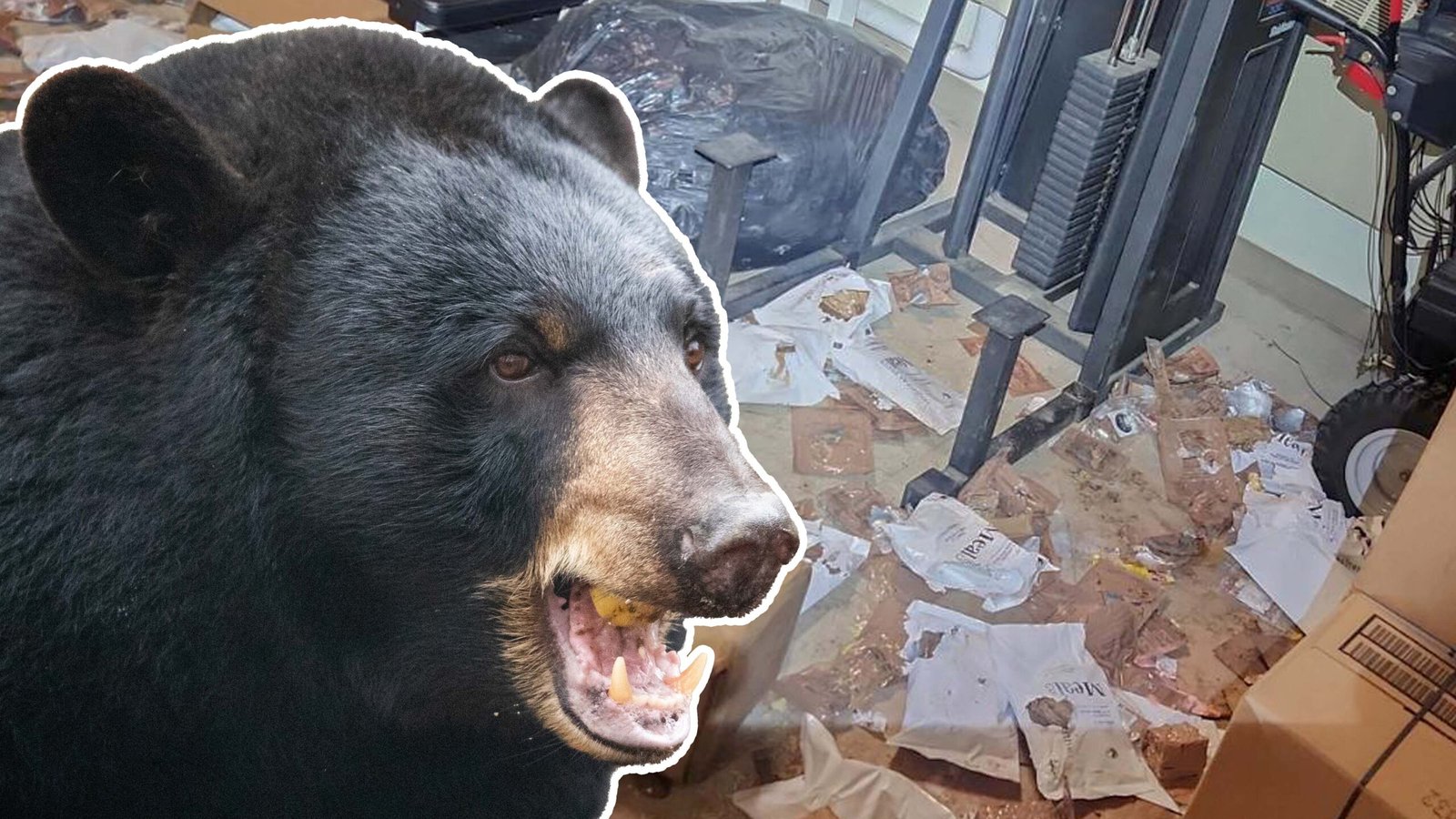Alaska black bears raided a supply room and a motor pool at Joint Base Elmendorf-Richardson, Alaska, leaving trails of MRE trash and climbing inside at least one Humvee in different incidents over the past month.
Perhaps unsurprisingly at JBER — which troops sometimes pronounce “J-Bear” — the bear raided at least on unit’s stash of cold weather Meals, Ready-to-Eat, or MREs leaving behind dozens of torn wrappers and packaging. About a week later, police and wildlife officials responded to a motor pool garage on base and found a bear inside a Humvee that was undergoing repairs.
It’s unclear how many bears were involved, the units involved or if the two incidents were the same bears, but officials said at least two raided a base motor pool building. The attack was first reported by U.S. Army WTF Moments, where a reader said that one of the incidents occurred when a bear got into a company building via a propped open door.
A JBER Wildlife Conservation Law Enforcement official told Task & Purpose that on Oct. 28 a bear “entered a building used to store equipment and supplies, including MREs. Personnel observed open food packaging on the floor,” said Erin Eaton, a JBER & 673d Air Base Wing Public Affairs spokesperson. They got a second call on Nov. 2. “Upon entering the building, officers observed a black bear in one of the military vehicles.”
Photos courtesy of JBER Wildlife Conservation Law Enforcement Office
The MRE attacks created a metaphorical dilemma around the age old phrase, “Does a bear poop in the woods?” MREs are infamous for causing constipation, and the gum in the MRE, counter to an often-stated myth, will not help.
Though it can be comical thinking about a bear eating MREs, it’s a more serious matter than that. Corey Stantorf, the Alaska Department of Fish and Game Anchorage-area biologist, said a bear finding food in a building could lead to the bear returning, which almost always ends very, very badly for the treat-seeking bear.
“Unfortunately, in those circumstances, bears that forcibly enter building structures and then get rewarded start habituating those types of areas, buildings, tents, etcetera, with food,” Stantorf said. “That’s a very serious issue and usually ends with the bear being euthanized.”
Subscribe to Task & Purpose today. Get the latest military news and culture in your inbox daily.
Another serious issue that can happen is a bear that finds a food source can disrupt their annual hibernation schedule.
“As long as there’s an ample food source, the bears won’t go into hibernation,” said James Wendland, JBER Wildlife Conservation Law Enforcement Officer. “Their hibernation period is food driven. That’s why the bears that are fed at the zoo don’t hibernate.”
The plastic sleeves and other non-food items aren’t great for the bear. But especially the heating pack, made of magnesium-iron alloy and sodium, which isn’t very attractive to the bear.
Jaime Sajecki, the Regional Wildlife Manager with the Virginia Department of Game and Inland Fisheries, previously worked as the department’s Black Bear Project Leader, working closely with bears as a wildlife biologist for 12 years. She said it’s unlikely that the bear would have eaten the heater packets because they don’t smell like food, but there’s a chance they could bite into one and learn the hard way.

After all, a single drop of water can activate the heater, which heats an MRE’s eight-ounce main meal by 100 degrees in just 10 minutes.
Some commenters on US Army WTF Moment’s post wondered what the bear’s favorite MRE would be. Though it’s impossible to say for sure, Sajecki did say bears have a diet that is 70% vegetarian. The MRE no one wants may be the bear’s favorite, the infamous vegetarian meal options like the omelet MRE.
However, the bears may have outsmarted the online commenters since the MREs they ate appear in pictures to be Cold Weather MREs, a calorie-dense version of the pre-packed meals. Each Cold Weather MRE averages about 1,560 calories — including 52 grams of protein, 58 grams of fat, and 221 grams of carbohydrates — and is an ideal meal for a black bear.
“Their food sources are different, and they have different nutritional needs. But in the fall, when they’re getting ready to go into their dens, where they’re going to lose about 30% of their body weight, they go from eating normal — depending on the time of year — on average, let’s say only 5,000 calories a day,” Sajecki said. “In the fall, they are trying to find and eat 20,000 calories a day so they can put on all this weight [for hibernation].”

